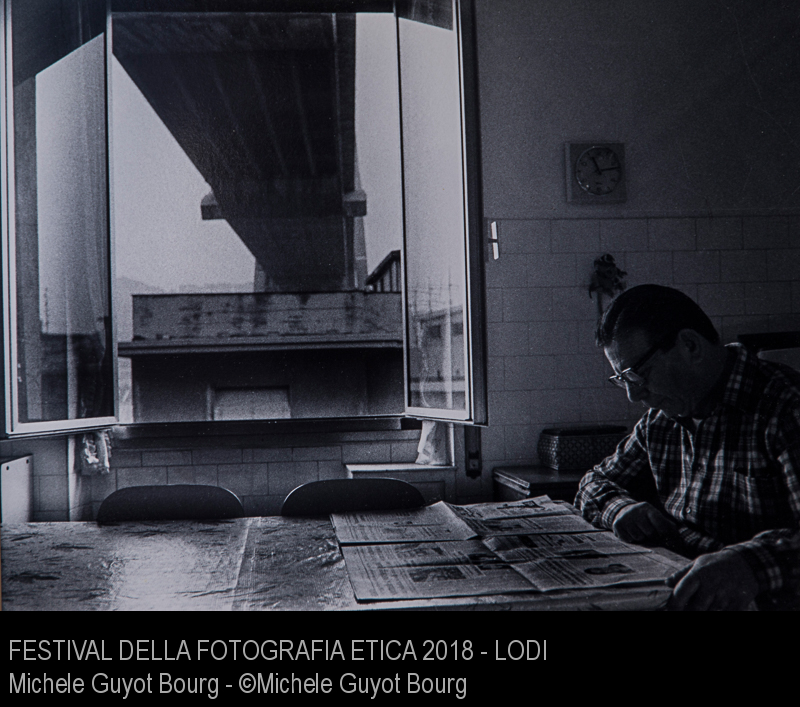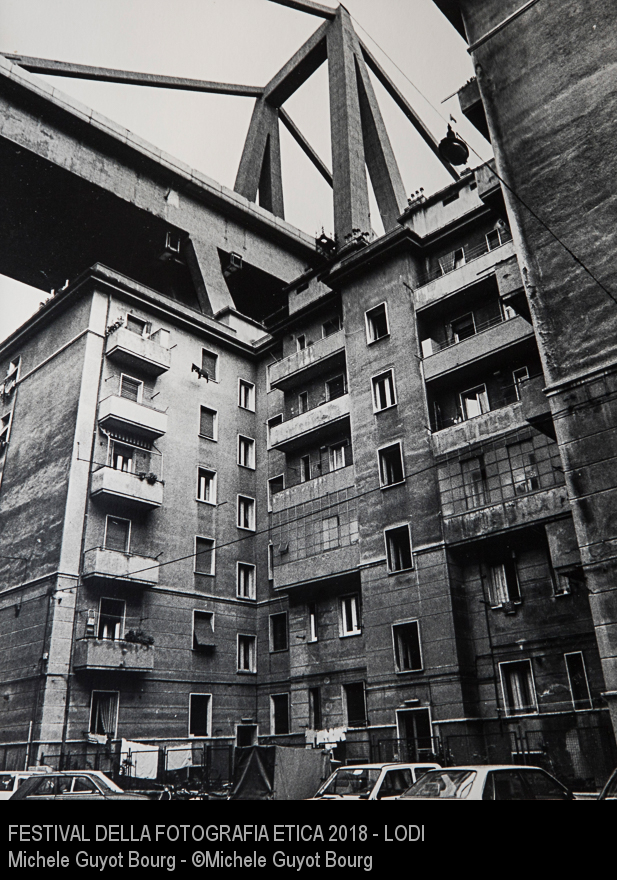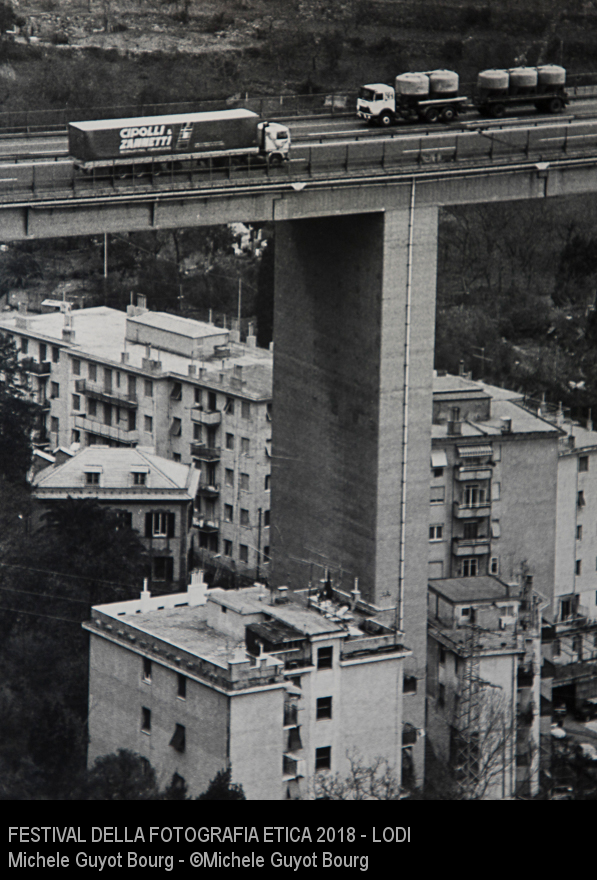This photographic work was carried out between the late 80s and early 90s. It began one day when the author of this reportage was waiting for the bus under one of those bridges that were built in the early 60s, symbols of the Italian engineering of that time. Suddenly, loud noises, like thunder roars, broke the silence. But it was only a truck: its passage on the joints of the bridge caused a deafening sound, almost as if everything was going to collapse.
On that same day, Michele Guyot Bourg came up with the idea of a research project on what was taking place around the streets that crossed his city. This project, so far away in time, took four years of his life. It has become tragically relevant, now more than ever, during these recent times of mourning for the city of Genova which was struck by a bridge collapse that caused the death of 43 people on August 14.
“Living under a dark threat”, has been exhibited everywhere in Italy but not in Genova. The artist carried out his project during free time after work, whenever he would get the chance to retreat into his darkroom and develop the shots. He is ever grateful to his fellow citizens for allowing him to enter not only their homes, but also their lives, which he carefully documents within his photographs.
He recalls the railway workers’ houses of Fillak street, under the Morandi bridge, and how skeptical the people were at first toward his idea to document the passing of life and time centering around the bridge. Sometimes, it would take him almost 6 months to persuade people to let him take their photo.
This is a photographic documentation with the power of direct speech, that faithfully represents facts not merely for how they occurred, but also for the influence they have had over the years. Voices are joined here with the images and can be used as a toolforremembering and documenting by a nation seeking self-reconciliation in the days following that tragic morning in Genova.



